I bought a pair of Dodd Audio 120 Mk III amplifiers in late November of 2019; serial #s 7 and 8 from 2008.
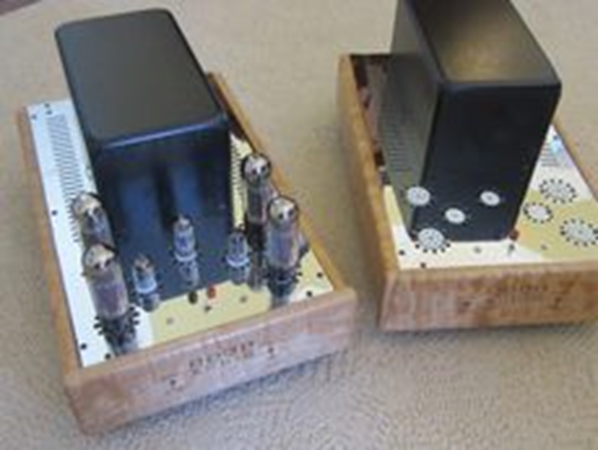
Being very impressed with their power, resolution and detail, albeit with a rather sterile and unengaging presentation
compared to previous tube amplifiers that have been in our system, in January of 2020, I bought a Dodd Audio Battery
Powered Preamp. Regrettably, when installing new batteries into the preamp, I didn’t notice that a press-on connector
in the right channel circuit was not completely pressed-on. This resulted in a faulty signal being sent to the right amp
which took out a bias resistor. I bought 2 identical replacement resistors, PRP 1K, 1 watt and proceeded to replace the
blown resistor. The circuit layout in the 120 is complicated, and allows access only to one side of the circuit board. A
very difficult de-soldering of a gigantic copper busbar is required to gain access to the other side of the circuit board.
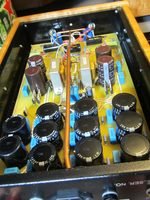
The first resistor ended up with what I have to conclude was a cold solder joint, as when I powered up the amp and
sought to bring the bias up to 70 mA (per push-pull pair), at about 32 mA, the magic smoke indicated that the
replacement resistor was blowing. In the course of applying (braided copper wire) solder wick to that first resistor to
remove it and replace it with the second replacement resistor, the wick came in contact with one of the circuit board
traces which caused a flash of light…which was disturbing…but I was able to get two good joints on the second resistor.
However, the amp would not power up…ughhh.
I contacted Dannie Ritchie through PM here in Audio Circle to inquire about anyone that he might know who could
repair my amp. He graciously pointed me to Mr. Charlie Cocci, friend of both Dannie and Gary Dodd. Dannie spoke in
glowing terms about Charlie as a human being and super capable with electronics; assessments that I would come to
agree with over the course of several months while he was having a new top plate made and assembling parts (both
pandemic delayed) and re-building my amps into something that not only would sound better, but would be a breeze to
work on should that ever be necessary. Before I go on, I want to make it clear that I’ve had the very good fortune to
interact with legends of the boutique audio world; Jon Soderberg, George Short, Paul Laudati, Bob Sattin, Scott
Hall…there are probably others that I’m forgetting…Charlie exemplifies the best off of all of these, a perfectionist,
humble and generous…but at a level that exceeds that of all of the very fine gentlemen that I just referred to. I
thoroughly enjoy and learn a great deal from conversations with Charlie. And not a single conversation occurs without
me bursting into laugh out loud laughter.
So this is where things get interesting. In early July, Charlie had the amps completed. He utilized the same chassis, back
plate and associated connectors and front plate and switches…other than that it was all new parts. It was built with the
same circuit as the Dodd MK III but with 2 5687 (or equivalent) tubes in the front end instead of the 3 that the Dodd 120
came with. The weight of the amplifier increased from approximately 40 lbs. to approximately 50 lbs.
In discussing the circuit, Charlie had occasionally referenced a similar, but far more expensive, project that he had
inherited from Gary after his untimely death in 2015. Long story short, the original customer who had started this
project with Gary, had become disinterested in following through with the project; to some degree based on the
expected cost; which was largely influenced by the cost of the Dueland VSF coupling caps that the customer had
purchased for use in the amps. Charlie described these capacitors as “the best sounding capacitors I’ve ever heard.”
They’re very expensive. These monoblock amplifiers also used the Dodd 120 circuit and a quad of KT77s, but utilize 2 dual
triode 6BL7GTs for the input section. Charlie described these tubes as “6SN7s on steroids”. My research indicates that
each triode section of a 6BL7GT can swing as much as 10 watts! Charlie told me that these input tubes are DC filtered
while the output section is AC. The output section power supply is Pi filtered using an 8 Henry choke. The input power
supply is also Pi filtered using a 3 Henry choke. Also featured are massive power and 200 watt rated output transformers
and individual 10-turn Bourne bias pots for each output tube. Each amp weighs about 70 lbs.
I asked Charlie if he’d check with the original customer about the possibility of me purchasing these amps, and if so, how
much hondo would it take to make him whole and adequately compensate Charlie for his material and time costs in
building them. Charlie got back to me the next day with the great news: the customer was willing to let me buy them
and the cost to me was what I consider very low for what they are. Of course, I bought them.
They showed up in the most impeccably packed boxes I’ve ever received audio equipment in.
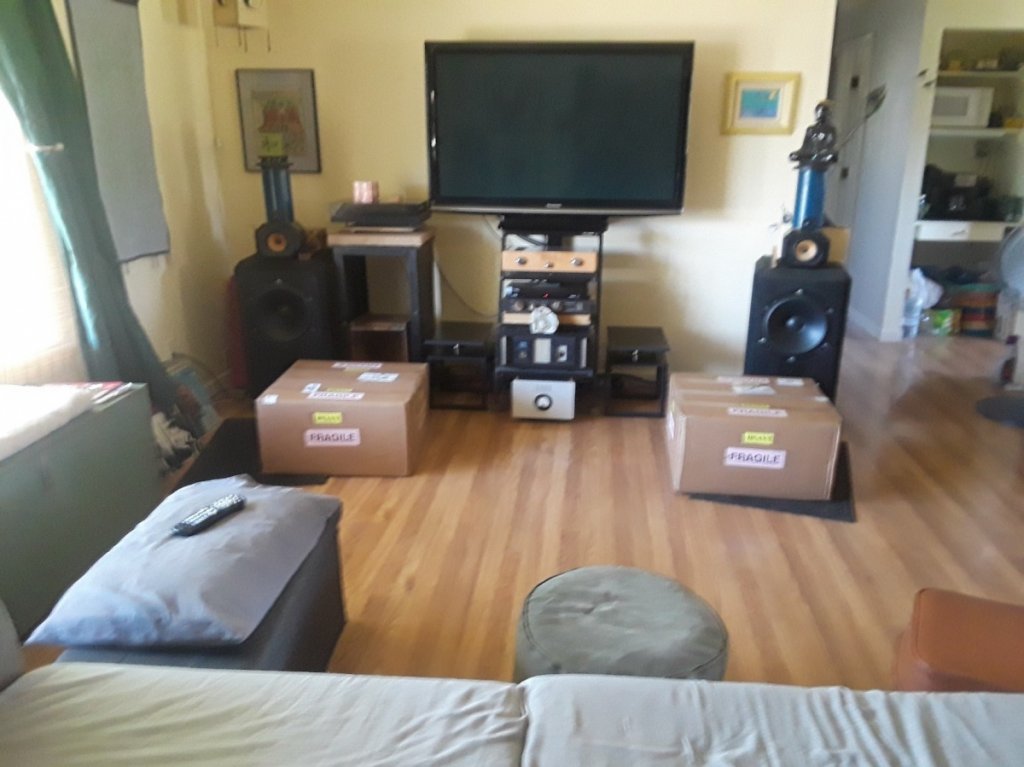
My first view of the amp. I knew I was in for an amazing experience with these things!
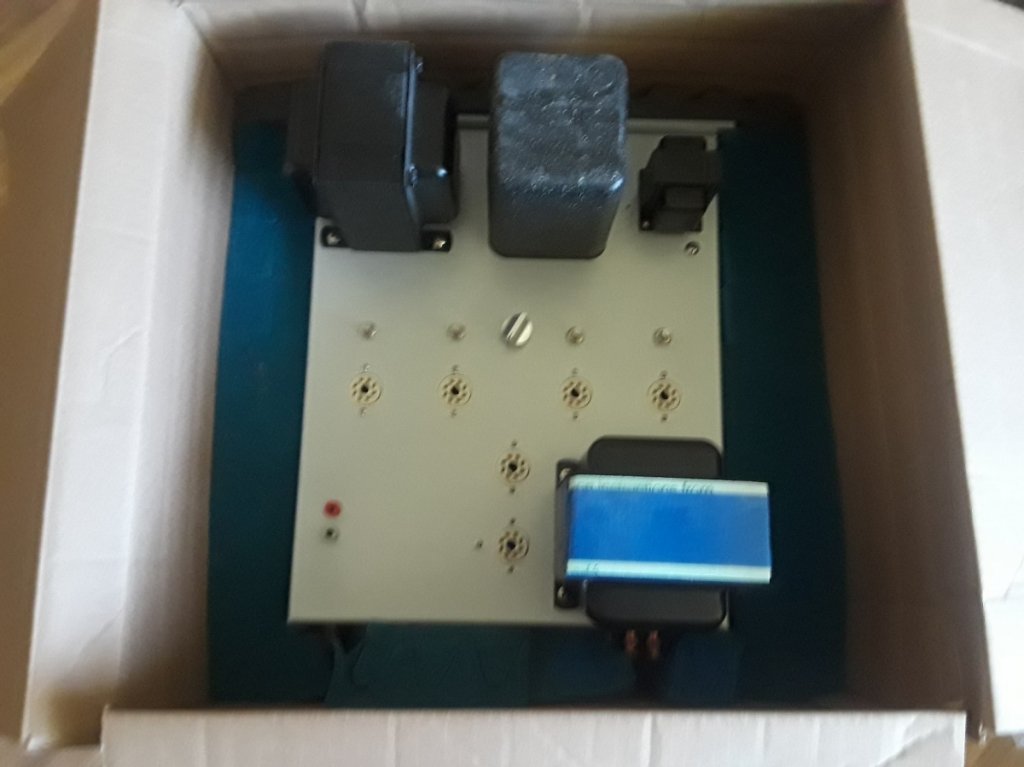
The circuit layout is electro-industrial art!
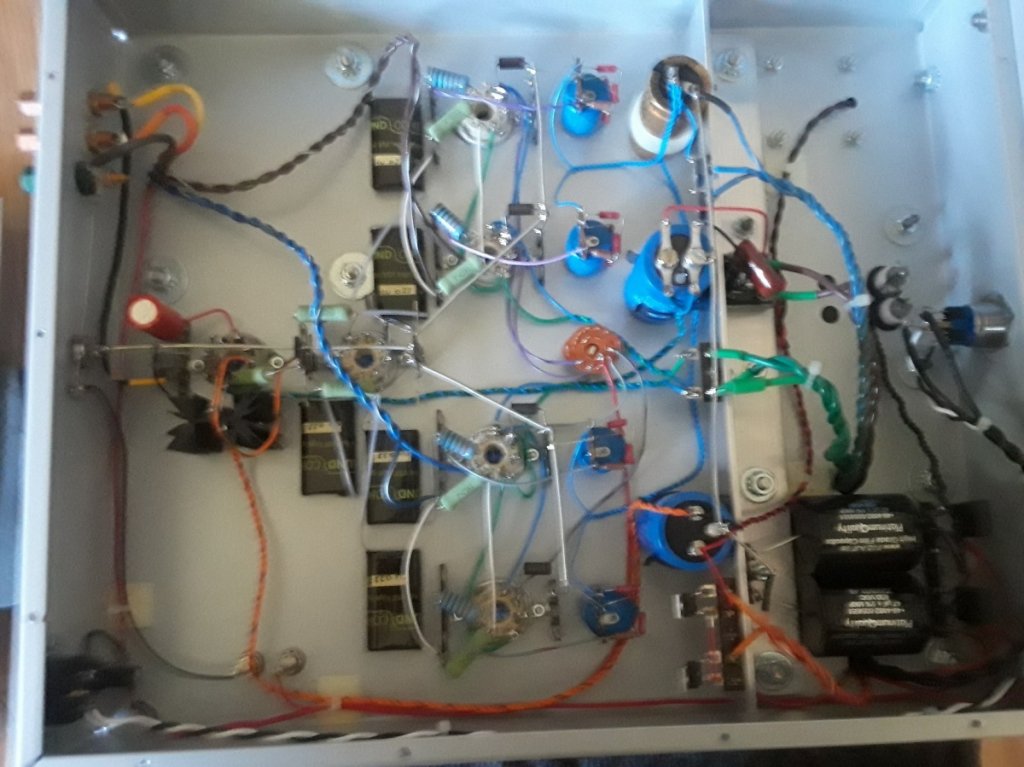
I was puzzled by the absence of any ginormous capacitors. As Charlie explained, an
audio circuit that has high enough voltage doesn't need much capacitance...and
provides for faster, more dynamic sonics than high capacitance circuits. The
realization of the truth of that statement would be a spine tingling experience!
Close up:
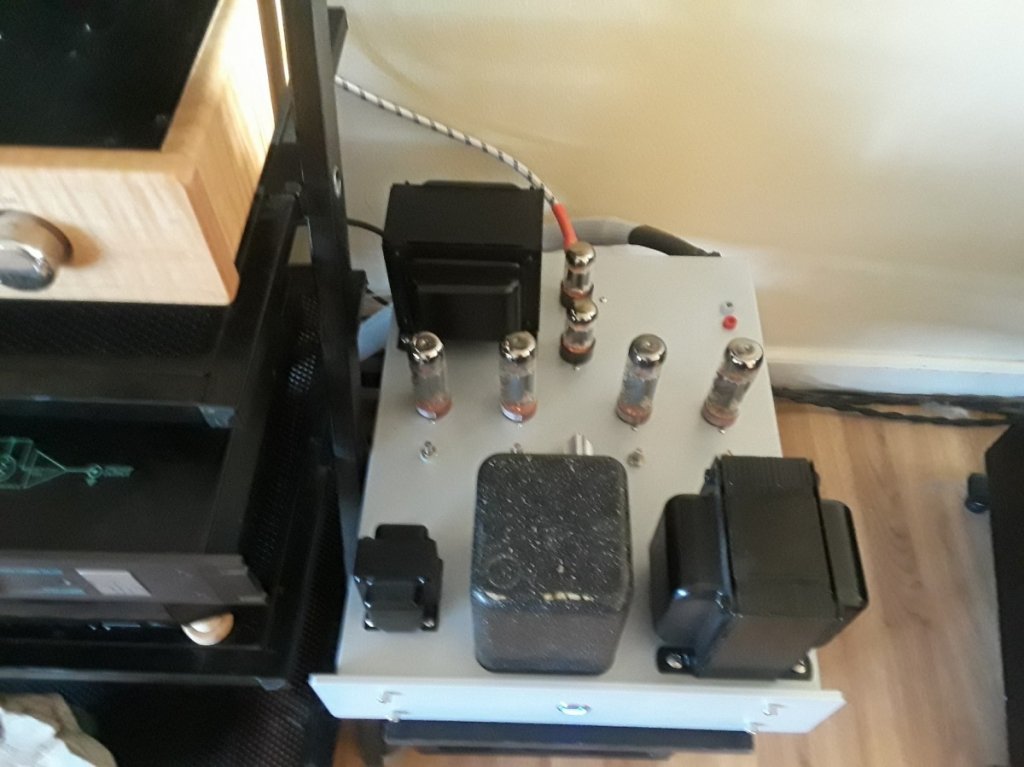
From the side:
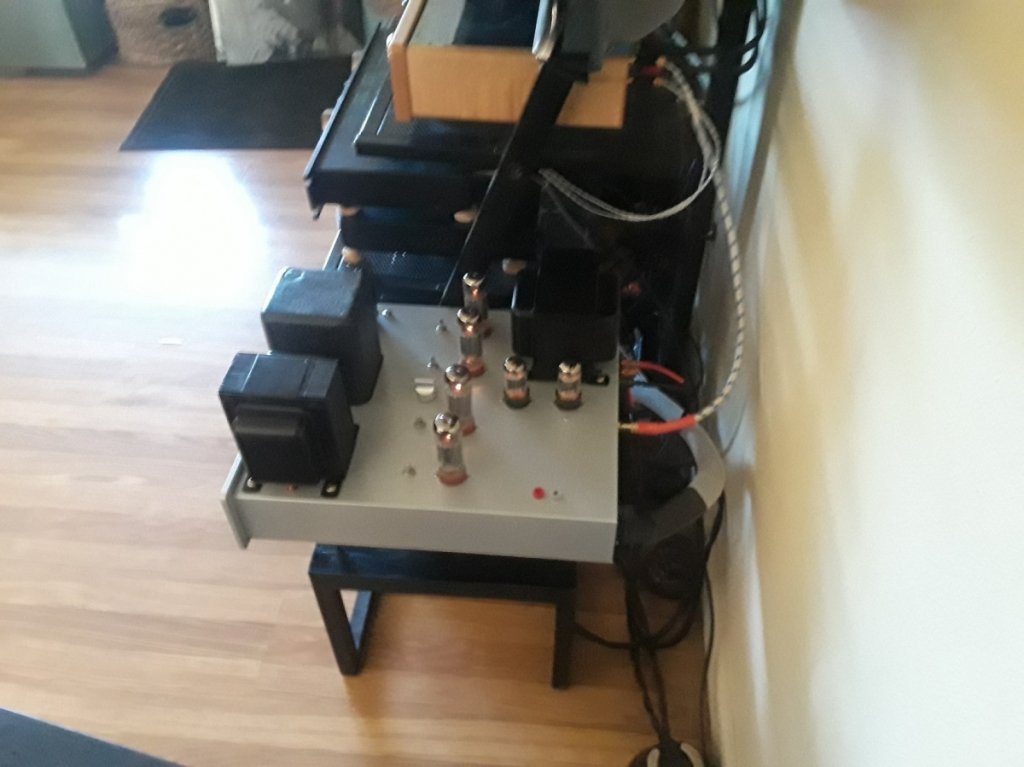
Regarding sound. Jaw dropping. These replaced a Jon Soderberg modified Threshold Stasis 2 that outputs about 225 watts per channel, that stood-in for the Dodd 120s while they were with Charlie. The difference between the Cocci Audio Ultimates (yes, that’s what I’m calling them!), was stunning. The Threshold is known for awesome bass, but in comparison with the Ultimates, the Threshold seemed like a poodle and the Ultimates like an Alpha Male wolf! Most notably, the growl that the big 12’ woofers on the B&W Matrix 801 S2 with Northcreek Crossovers was mind bending! The ability, at a single volume setting, to escalate from quiet to window shaking scariness is shocking! Couple that with the bite that these amps can make these woofers do overcomes the one single minor criticism that I used to have for these otherwise awesome speakers…the ability for bass notes to snap hard…now they can…and do! Charlie’s incredibly insightful and carefully designed and laid out power supply, with separate grounding from audio circuit results in dead-quiet background. Gary’s battery powered preamp and Charlie’s Ultimates make for incredibly high signal to noise ratio. Seems silly writing “noise”; what noise?
Soundstage is ridiculous. “Wicked holographic” as Charlie said. He’s right. Incredible acoustic space around voices and instruments, height width, depth of soundstage are all beyond what I could even imagine was possible. Absolutely magic machines. And easy in the eyes! Check out the cool blue ring illuminated on/off button!
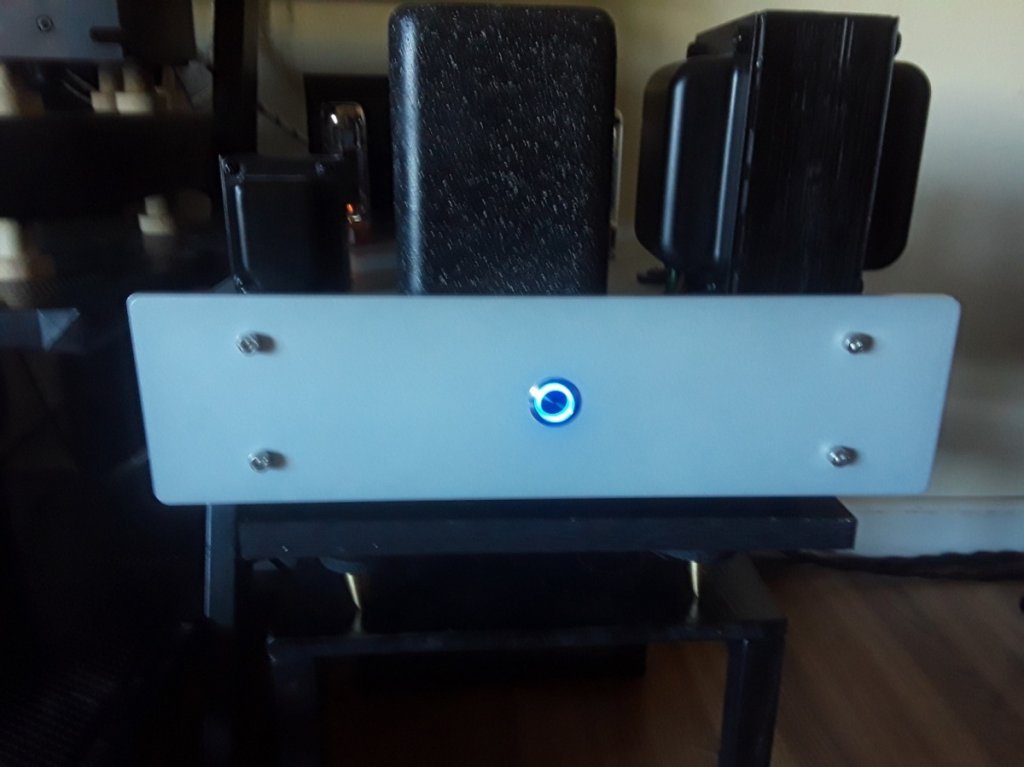
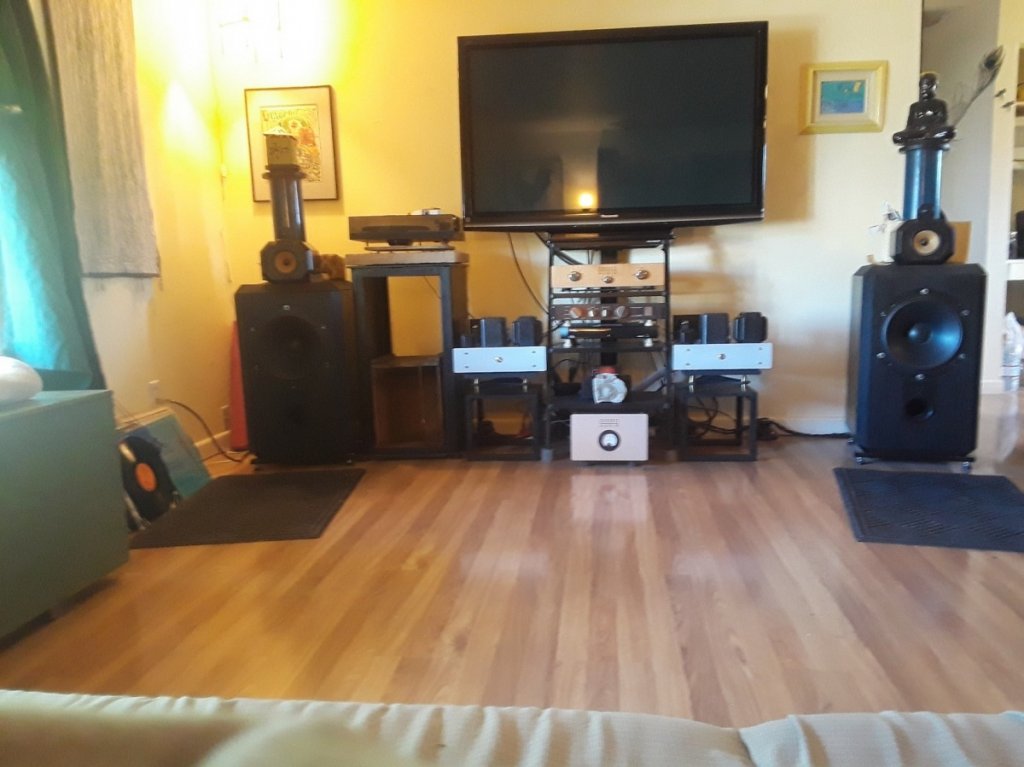
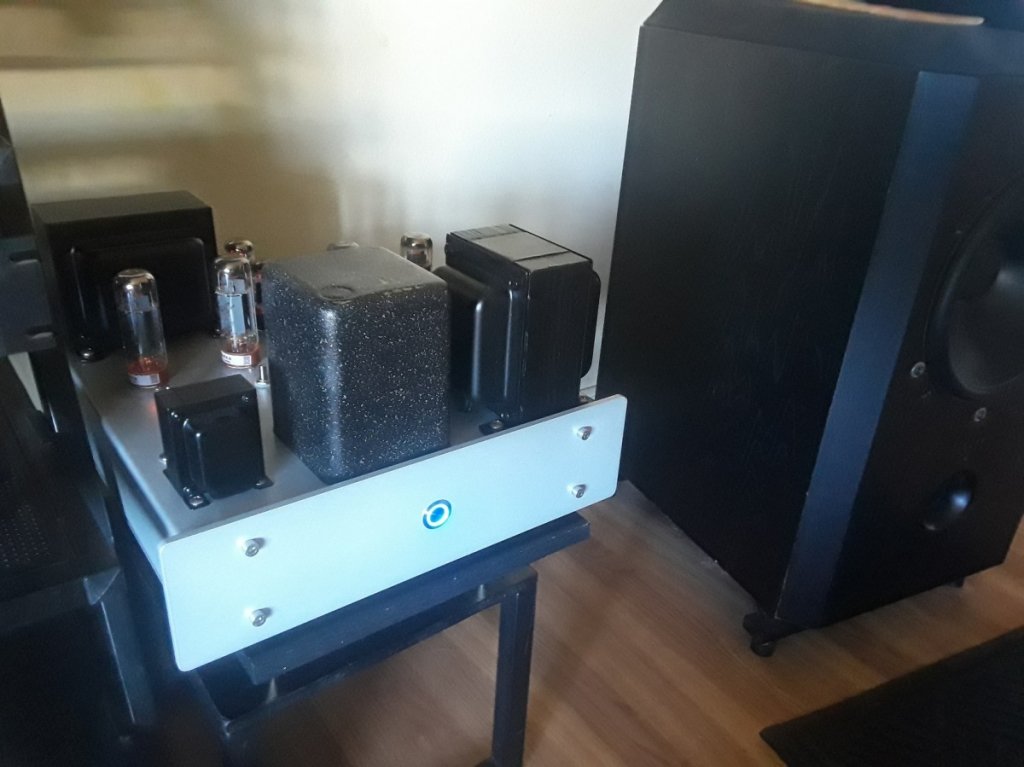
OK, well I don’t want to set a record for longest post ever, so I’ll wrap up. I’ll end with a couple of things: Charlie has told me that these are the best sounding amps that he’s ever built or heard. He’s also told me that he would put these amps up against any tube amp that he’s aware of. He told me that these amps sound better than Dannie’s Blue Monsters…sorry Dannie! He also told me that theoretically, the only amplifier that COULD sound better than these amps would necessarily have to use the same Dueland VSF capacitors, the best sounding capacitors in many, including Charlie’s opinion. And there are certainly not many amplifiers that have these in them due to their extraordinary cost. So yea, pretty surreal thing to have the gentleman that built your amps tell you that they very well may be the best sounding amps on the planet!
Suffice it to say, I feel like the luckiest audio-geek on the planet! This too will pass I’m sure, but Mr. Cocci’s talents, kindness, friendship and the incredible Cocci Audio Ultimates have certainly made me feel that way for now! Should any of the AC community be interested in a similar experience, I certainly recommend saying hello to Charlie. With Charlie’s permission, I can offer that contacting Danny Ritchie through PM here on Audio Circle is the way to do that. He can put you in touch with Charlie as he did for me. So glad that that resistor blew!!
Best regards and happy listening!
mike